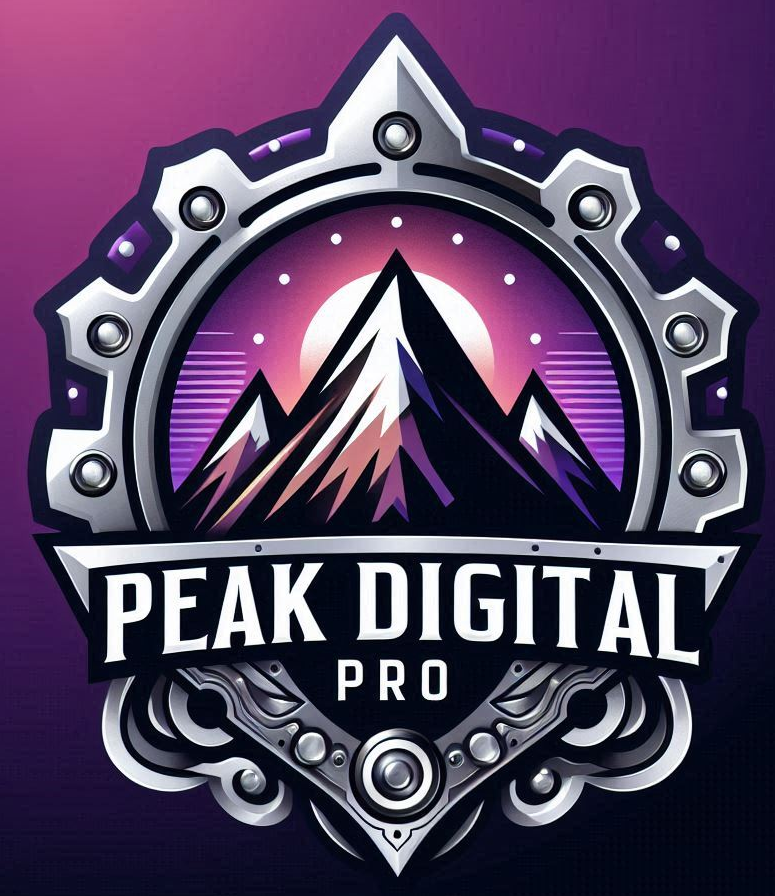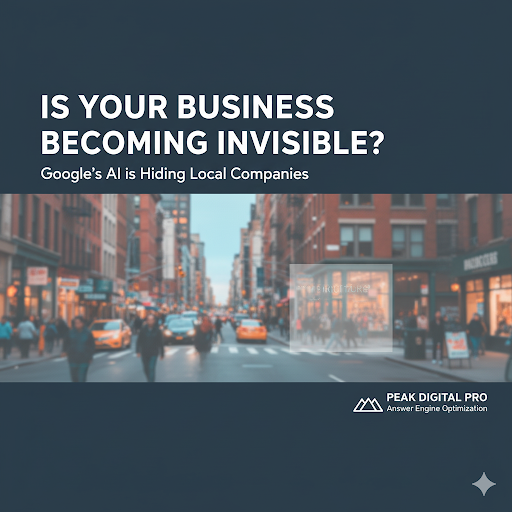Optimizing Homepages: Essential Tips for Business Owners
Homepage design shapes the first impression your business makes online and it can decide whether visitors stay or leave in seconds. Surprising as it sounds, a delay of just three seconds causes 53 percent of mobile users to abandon your site . Most owners obsess over flashy images and catchy slogans for their homepage but the real winners are the brands that focus on smart design, lightning-fast load speeds, and tailored content for local audiences. This simple shift in strategy can be the difference between a forgettable site and a digital home that actually drives results.
Table of Contents
Quick Summary
| Takeaway | Explanation |
|---|---|
| Engage Users with Strong Visual Hierarchy | Use color contrast, size variation, and white space to guide user attention effectively on your homepage. |
| Ensure Fast Homepage Load Speed | Optimize images, reduce HTTP requests, and leverage CDNs to enhance user experience and conversion rates. |
| Personalize Content for Local Audiences | Tailor homepage content with regional language and context to better resonate with local users and needs. |
| Track Key Performance Metrics Regularly | Measure bounce rates, time on page, and conversion rates to understand user engagement and drive continuous improvements. |
| Utilize Advanced Analytics for Insights | Conduct heatmap analysis and user journey mapping to gain deeper insights into user behaviors and preferences. |
Design Elements That Drive Engagement
Businesses today recognize that homepage design is far more than aesthetic appeal. Strategic design elements directly impact user engagement, conversion rates, and overall digital success. The visual and interactive components of a homepage serve as critical communication channels that can either captivate or repel potential customers within seconds.
Visual Hierarchy and User Attention
Creating an effective visual hierarchy is paramount for guiding user attention and improving homepage engagement. Learn more about strategic web design techniques that transform visitor interactions. According to research from the National Institutes of Health , well-structured visual layouts can significantly increase user retention by strategically positioning key information and visual elements.
The core principles of visual hierarchy involve:
- Color Contrast : Utilizing color strategically to draw attention to critical call-to-action buttons and key messages
- Size Variation : Scaling important elements larger to create natural visual prominence
- White Space : Implementing strategic spacing that prevents visual clutter and enhances readability
Proper implementation of these principles ensures that visitors can quickly understand your value proposition without feeling overwhelmed. Professional designers understand that users typically scan webpages in an F-shaped pattern, making top-left and center placements critically important for crucial information.
Interactive Elements and User Experience
Engagement goes beyond static design. Interactive elements transform passive viewing into active exploration. According to Usability.gov guidelines , intuitive navigation menus and strategically placed interactive components can dramatically improve user experience.
Key interactive design considerations include:
- Responsive Navigation : Menus that adapt seamlessly across desktop and mobile devices
- Hover Effects : Subtle animations that provide immediate visual feedback
- Dynamic Content Sections : Areas that update or reveal additional information based on user interaction
These elements not only make websites more engaging but also communicate a sense of technological sophistication and user-centric design. When users feel their digital experience is smooth and anticipatory, they are more likely to explore further and convert.
Psychological Triggers in Design
Design is fundamentally about psychology. Color choices, typography, and layout can trigger specific emotional responses and behavioral patterns. Blue often communicates trust and professionalism, while warm colors like orange can stimulate excitement and action.
Effective homepage design considers these subtle psychological triggers. The goal is creating an immediate emotional connection that transforms casual visitors into interested prospects. Typography, imagery, and color palette work together to craft a narrative that resonates with your target audience’s expectations and desires.
By understanding and implementing these design principles, business owners can create homepages that do more than look attractive. They become powerful communication tools that guide, engage, and convert potential customers with remarkable precision.
Improving Homepage Load Speed and Performance
In the digital age, homepage performance is not just a technical detail but a critical business strategy. Website load speed directly impacts user experience, search engine rankings, and ultimately conversion rates. Even a single second of delay can significantly reduce user engagement and potential revenue.
The Impact of Load Speed on User Experience
Discover advanced performance optimization techniques that transform digital interactions. According to MDN Web Docs performance guidelines , load speed is a fundamental aspect of user experience that can make or break a website’s effectiveness.
Statistics reveal critical performance insights:
- User Expectations : 53% of mobile users abandon websites that take longer than three seconds to load
- Conversion Impact : A 100-millisecond delay can decrease conversion rates by 7%
- Search Rankings : Google considers page speed as a significant ranking factor for search results
These metrics underscore the importance of creating a lightning-fast homepage that provides immediate value to visitors. Performance optimization is not merely a technical exercise but a strategic business imperative.
Technical Strategies for Speed Optimization
Successful homepage performance requires a multifaceted approach. Businesses must implement comprehensive technical strategies that address various performance bottlenecks. Key optimization techniques include:
Here is a summary table that organizes the key technical strategies for homepage speed optimization, making it easier to compare and understand their impact at a glance.
| Optimization Technique | Description | Benefit |
|---|---|---|
| Image Compression | Reducing file sizes without losing quality | Faster load times |
| Browser Caching | Storing static resources locally | Fewer repeated server requests |
| Minimizing HTTP Requests | Reducing number of elements loaded | Improves initial load speed |
| Content Delivery Networks (CDNs) | Distributing content via global servers | Shorter load times worldwide |
- Image Compression : Reducing image file sizes without compromising visual quality
- Browser Caching : Storing static resources locally to reduce server requests
- Minimizing HTTP Requests : Reducing the number of elements that need to load
- Leveraging Content Delivery Networks (CDNs) : Distributing content across global servers
These techniques work synergistically to create a faster, more responsive homepage. By systematically addressing performance limitations, businesses can create digital experiences that feel instantaneous and smooth.
Monitoring and Continuous Improvement
Performance optimization is an ongoing process. Regular monitoring and proactive adjustments are essential for maintaining optimal homepage speed. Utilize tools like Google PageSpeed Insights, GTmetrix, and WebPageTest to receive detailed performance diagnostics.
Key performance metrics to track include:
- First Contentful Paint : Time until first content appears
- Time to Interactive : Duration before page becomes fully functional
- Total Blocking Time : Measure of page responsiveness
By treating homepage performance as a continuous improvement initiative, businesses can stay ahead of technological shifts and user expectations. The goal is not just speed but creating a seamless, responsive digital experience that feels effortless and engaging.
Remember that homepage performance is more than technical metrics. It’s about creating a digital environment that respects user time, provides immediate value, and reflects your brand’s commitment to excellence. Invest in performance, and you invest in your digital success.
Optimizing Content for Local Audiences
For business owners, creating a homepage that resonates with local audiences is more than a marketing strategy—it is a critical connection mechanism. Local content optimization transforms a generic digital presence into a targeted, engaging experience that speaks directly to community needs and preferences.
Understanding Local Audience Dynamics
Explore advanced content localization techniques that create meaningful digital connections. According to research from the National Institutes of Health , content tailored to specific regional populations significantly enhances user trust and engagement.
Local audience optimization involves several strategic considerations:
- Regional Language Nuances : Incorporating local dialects, terminology, and communication styles
- Community-Specific References : Highlighting local landmarks, events, and cultural touchpoints
- Addressing Local Pain Points : Understanding and directly speaking to region-specific challenges
These approaches transform homepage content from generic messaging to a personalized communication channel that feels intimately relevant to local users.
Content Localization Strategies
Effective localization goes beyond simple translation. It requires deep understanding of local market characteristics, user behaviors, and cultural contexts. Business owners must craft content that feels authentically connected to their specific geographic community.
Key localization techniques include:
- Geo-Targeted Messaging : Customizing content based on specific regional interests
- Local Success Stories : Featuring case studies and testimonials from nearby customers
- Regional Visual Representation : Using imagery that reflects local landscapes and community aesthetics
By implementing these strategies, businesses create homepage experiences that feel less like corporate communications and more like genuine community conversations.

Leveraging Local SEO and Content Optimization
Local content optimization directly impacts search visibility and user engagement. Search engines increasingly prioritize geographically relevant content, making local optimization a critical digital marketing strategy.
Effective local SEO and content optimization involve:
- Location-Specific Keywords : Integrating city, neighborhood, and regional search terms
- Schema Markup : Implementing structured data that helps search engines understand local context
- Locally Relevant Meta Descriptions : Crafting summaries that speak directly to regional audiences
These technical and content-driven approaches ensure that homepages not only look local but are also discoverable by users seeking region-specific solutions.
Remember that local content optimization is an ongoing dialogue with your community. It requires continuous learning, adaptation, and genuine commitment to understanding local audience needs. Your homepage should feel less like a digital billboard and more like a welcoming conversation with neighbors who share your professional passion and local context.
Tracking Homepage Success With Key Metrics
Measuring homepage performance is not a luxury—it is a strategic necessity for business owners committed to digital success. By systematically tracking key metrics, businesses can transform raw data into actionable insights that drive continuous improvement and optimize user experience.
Fundamental Performance Metrics
Discover comprehensive performance tracking strategies that elevate digital marketing effectiveness. According to Usability.gov guidelines , understanding user interaction requires a multifaceted approach to metric analysis.
Critical performance metrics include:
To help quickly reference the fundamental homepage performance metrics discussed, here is a summary table outlining each metric and what it reveals about user behavior.
| Metric | What It Measures | Why It Matters |
|---|---|---|
| Bounce Rate | % of visitors who leave without interacting | Indicates engagement/interest |
| Time on Page | Average time visitors spend on the homepage | Reveals content/value retention |
| Conversion Rate | % completing desired actions (e.g., sign-up, purchase) | Shows effectiveness at driving outcomes |
| Traffic Sources | Origins of homepage visitors (e.g., search, direct, social) | Identifies successful acquisition channels |
- Bounce Rate : Percentage of visitors leaving without interaction
- Time on Page : Average duration visitors spend on the homepage
- Conversion Rate : Proportion of visitors completing desired actions
- Traffic Sources : Origins of homepage visitors
These metrics provide a comprehensive snapshot of homepage effectiveness, revealing both strengths and potential areas for optimization.

Advanced Analytics and User Behavior
Beyond basic metrics, advanced analytics offer deeper insights into user behavior. According to the National Institute of Standards and Technology , comprehensive performance evaluation requires examining effectiveness, efficiency, and user satisfaction.
Key advanced tracking techniques involve:
- Heatmap Analysis : Visual representation of user click and scroll patterns
- User Journey Mapping : Tracking user navigation through homepage elements
- Interaction Tracking : Monitoring specific user engagements like button clicks
- Segmentation Analysis : Breaking down metrics by user demographics
These sophisticated tracking methods transform raw data into meaningful insights about user preferences and behavior patterns.
Continuous Improvement Strategy
Successful homepage optimization is an ongoing process of measurement, analysis, and adaptation. Business owners must view metrics not as static numbers but as dynamic indicators of digital performance.
Strategic improvement steps include:
- Regular Performance Reviews : Monthly or quarterly comprehensive metric assessments
- Comparative Analysis : Benchmarking against industry standards
- Iterative Design : Making incremental improvements based on metric insights
- Cross-Platform Consistency : Ensuring metric tracking across desktop and mobile platforms
The most successful businesses treat their homepage as a living digital asset, continuously refined through data-driven insights. Metrics are not just numbers—they are the language of user experience, speaking directly to how visitors perceive and interact with your digital presence.
Remember that tracking metrics is about understanding human behavior. Each data point represents a potential customer’s journey, offering invaluable insights into their needs, preferences, and interactions with your business. Embrace these metrics as a powerful tool for creating more engaging, effective digital experiences.
Frequently Asked Questions
What are the key design elements that drive engagement on a homepage?
To enhance engagement on a homepage, focus on strong visual hierarchy using color contrast, size variation, and white space to guide attention. Incorporate interactive elements like responsive navigation and dynamic content to create an engaging user experience.
How can I improve my homepage’s load speed?
Improve homepage load speed by optimizing images, using browser caching, minimizing HTTP requests, and leveraging Content Delivery Networks (CDNs). These strategies together enhance performance and provide a better user experience.
Why is it important to optimize content for local audiences?
Optimizing content for local audiences is essential as it creates a more personalized experience that resonates with community needs. It enhances user trust and engagement, making your homepage more relevant to specific regional users.
What key metrics should I track to measure homepage success?
Track fundamental performance metrics such as bounce rate, time on page, conversion rate, and traffic sources. These metrics provide insights into user engagement and the effectiveness of your homepage in achieving business goals.
Unlock the True Power of Your Homepage with Proven Digital Strategies
Is your homepage losing visitors before you get the chance to make a meaningful connection? This article highlighted how slow load times, generic content, and lack of local engagement can cost you valuable clients and growth opportunities. Many business owners are stuck trying to stand out in competitive markets but without the right tools and insights, results can feel frustratingly out of reach.

Why wait to see your website reach its full potential? At Peak Digital Pro , we take proven concepts like lightning-fast load speed, tailored local content, and user-focused design directly from the article and apply them to your business for real results. Get access to expert web development and advanced SEO optimization so your homepage becomes a true growth engine, not a roadblock. Visit our website now and let our team show you how to attract more customers, improve engagement, and position your business as the leader in your local market. Don’t let another visitor slip away—take the next step toward digital success today.
Recommended
-
[
Small Business Website Effectiveness and the Impact of AI Search Implementations
-
[
Website User Experience: A 2025 Guide for Business Owners
]( https://peakdigital.pro/2025/07/30/website-user-experience-guide-business-owners )
-
[
Local Search Meets Answer Engines: What SMBs Are Really Struggling With (and What To Do Next)
-
[
Essential Content Optimization Tips for Business Owners
]( https://peakdigital.pro/2025/08/16/content-optimization-tips-for-business-owners )







